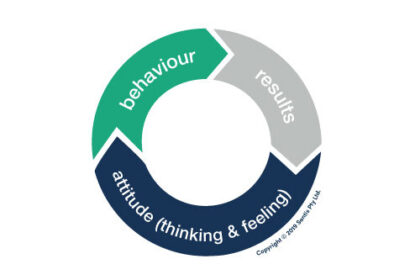When it comes to developing a positive safety culture, there’s often a false belief that it’s a once-off activity. You make the decision to invest in developing your culture, you run training and coaching programs across your organisation to shift your team’s perspective around safety, and you enjoy the merits of improved safety outcomes for the foreseeable future. But unfortunately, that picture couldn’t be further from the truth.
You see, culture isn’t a stagnant element. Rather, it’s like a living entity that’s constantly being influenced and moulded by the shared values, attitudes and behaviours of every person in your organisation. So, while the implementation of a holistic safety culture development program will start to drive positive results, the real measure of its success comes down to your ability to sustain the cultural changes that you’ve worked so hard to implement.
Otherwise, like a new car that gets neglected when it comes to receiving a regular service, you’ll find your safety culture slowly breaking down. The only way to prevent that from happening is to maintain a long-term view with your safety improvement initiatives by ensuring that you continue to invest in embedding the changes you’ve introduced deep within your organisation.
The safety rollback—not all changes are permanent
An easy way to think about sustaining cultural change is to think of your safety culture as being a wheel that you have to push uphill. The bottom of the hill symbolises an unproductive safety culture, while at the top of the hill rests a culture of safety citizenship.
Given that you’re working against people’s natural resistance to change, it takes the combined effort of both your leaders and your people to start slowly rolling the wheel uphill, one step of cultural maturity at a time. With each step you take, the positive results begin to show that your safety initiatives are working. But while that’s a great start towards improving your safety performance, it’s only the first step on your journey towards safety culture maturity.
The real measure of your success is defined by the strategies that you’ve put in place to manage and sustain these changes—especially when your attention inevitably gets drawn away from your safety efforts due to unexpected factors, such as:
- a shift in market trends that lead to a sudden drop in commodity prices
- a change in leadership with a new CEO stepping in who has a different vision for your organisation
- unforeseen changes in demand that lead to a substantial increase in production pressure
- unexpected redundancies that have a negative impact on workplace trust and induce a fear of negative repercussions from incident reporting.
Despite your best intentions, when these issues shift your focus away from safety, the proverbial wheel of safety culture starts to roll back down the hill—landing you right back where you started and costing you the progress that you’ve worked hard to create.
That’s because your culture is constantly being influenced by the behaviours and attitudes of everyone in your organisation. So, while safety assessments and training programs serve as the initial push to help you improve your safety performance, it’s equally as important to maintain a continued focus on effectively managing and embedding the changes that you’ve introduced. By viewing your safety efforts as long-term commitments instead of short-term initiatives, you give your people the time they need to gradually turn these new safety behaviours from being conscious choices to unconscious safety habits.
The power of safety habits—your new insurance policy
You see, our brains have a natural tendency to form habits as a way of helping us conserve energy. When something becomes a habit, it requires less conscious effort and in turn, less energy for us to follow through with it. On the other hand, a change in our behaviours requires sustained thinking and conscious decision-making which costs us more energy and triggers a sense of resistance against change.
For example, imagine that you’re starting a daily exercise routine that requires you to go for a run every morning. At first, you’ll have to find the energy and motivation to get up and put your running shoes on at 6 a.m. But as the days go by and the act of exercising in the morning becomes gradually engrained as a habit, it becomes easier and easier for you to adhere to it until, eventually, the habit gets set so deeply that it actually induces a sense of discomfort when you have to skip your morning run.
The required behaviour (a morning run) stayed the same, but as the neural pathways involved with executing it were reinforced within your brain over time as a habit, the effort required to sustain that behaviour reduced drastically. As the habit continues to be reinforced, your motivation to stick with it is increased too—keeping you committed to your daily fitness routine, even during busy and stressful periods of time.
Well, that principle works the exact same way with your safety efforts. While at first, the new safety behaviours that you require from your team might take a substantial amount of conscious effort for them to adhere to, if you focus on embedding those changes across your organisation by continuously investing in your safety, you give your people a chance to gradually turn those behaviours into helpful safety habits.
In doing so, not only does it help develop a sense of intrinsic motivation within your team to adhere to optimal safety behaviours, even when they aren’t being supervised, but it also provides you with a safeguard against a safety rollback if your focus has to unexpectedly shift in another direction.
To kickstart your journey towards safety excellence, here are a few strategies that you can use to start reinforcing the changes that you’re introducing:
- Ensure that your prestart meetings and communication from leaders are consistent and transparent to reinforce your safety expectations.
- Ensure that you maintain regular, high-quality coaching conversations to guide your workers towards safety excellence.
- Review your prestart meetings and toolbox talks to ensure that they actively engage your workers and positively reinforce safe behaviours through praise and recognition.
- Review your incident investigation processes to ensure that they focus on finding a solution to issues that arise, instead of focusing on finding an individual to blame.
- Ensure that you have effective induction processes for newcomers to the organisation to ensure that you actively embed and reinforce the safety values and attitudes that your organisation shares.
Simply put, it’s about consistently reinforcing the safety vision, values and expectations that you hold as an organisation in an effort to engrain those required safety behaviours as safety habits.
There’s no quick-fix for safety
As you can see, the true measure of a safety culture improvement program isn’t about the results that you get in the short-term—it’s about how well you’re able to sustain those results in the long-term. That’s why it’s crucial to think about your safety improvement initiatives as long-term investments that should always stay front-of-mind.
While safety training programs will give you the push you need to start driving your safety culture towards safety citizenship, a strategic approach to change management and on-going investment in sustaining the changes you’ve introduced are crucial to maintaining the results you’ve worked hard to create. Otherwise, the celebrations and positive trends might be short-lived as you start to experience a safety rollback.
To kick-start your journey towards a more positive safety culture, we’ve developed our five-step roadmap for change to help you understand exactly what’s required at each stage of the safety culture improvement process. Part of our latest ebook on driving a positive safety culture, it’ll give you a step-by-step insight on exactly what it takes to drive your safety culture forward at each stage.
Just head here to download a copy for yourself today.
Remember—there is no overnight fix for improving your safety culture. But with sustained effort, strategic planning and a strong safety vision to guide you, there’s no reason why you can’t have a culture of safety citizenship.




